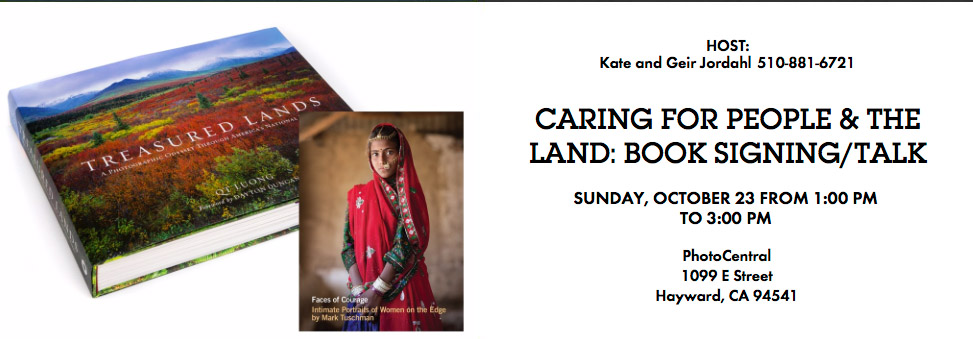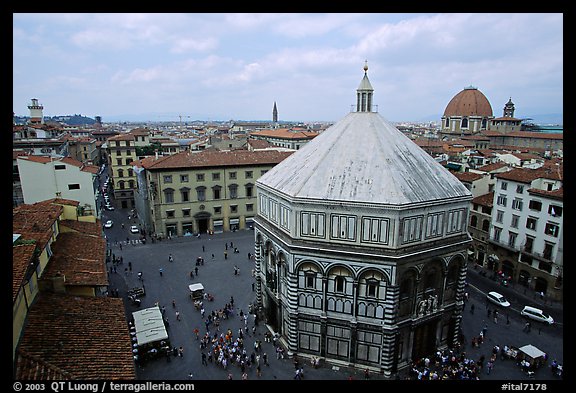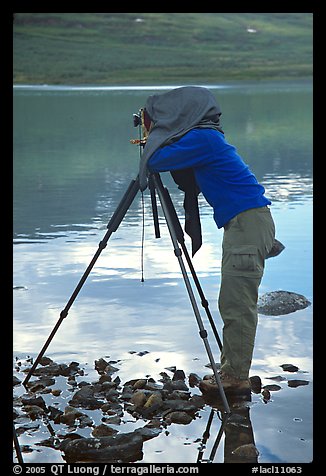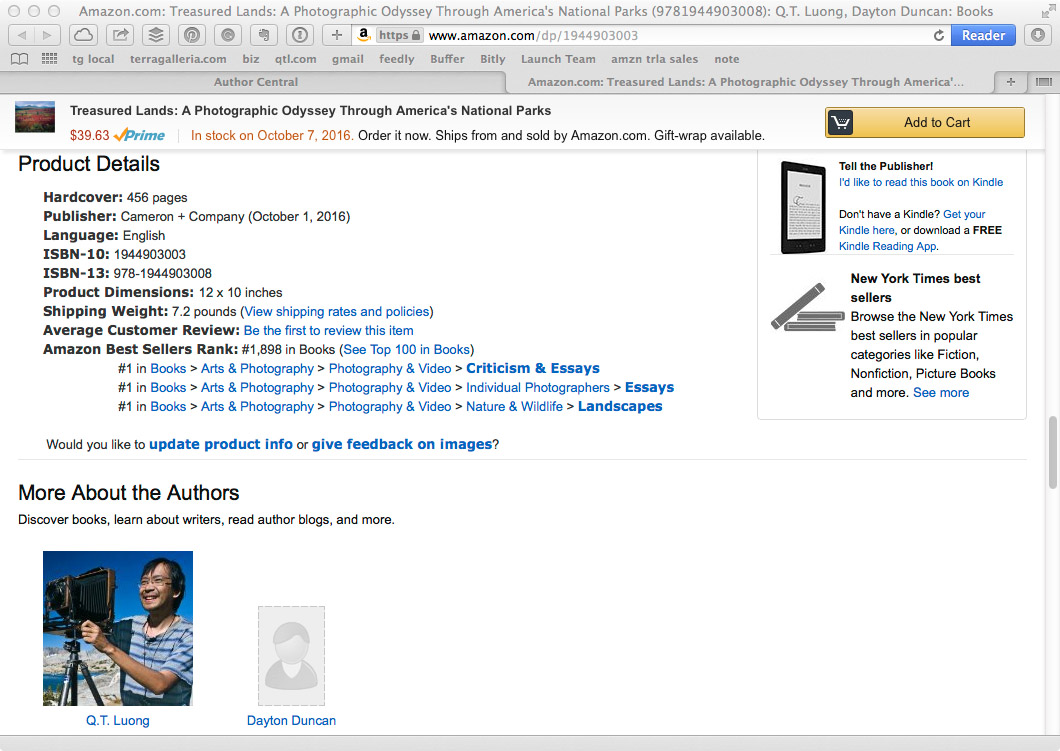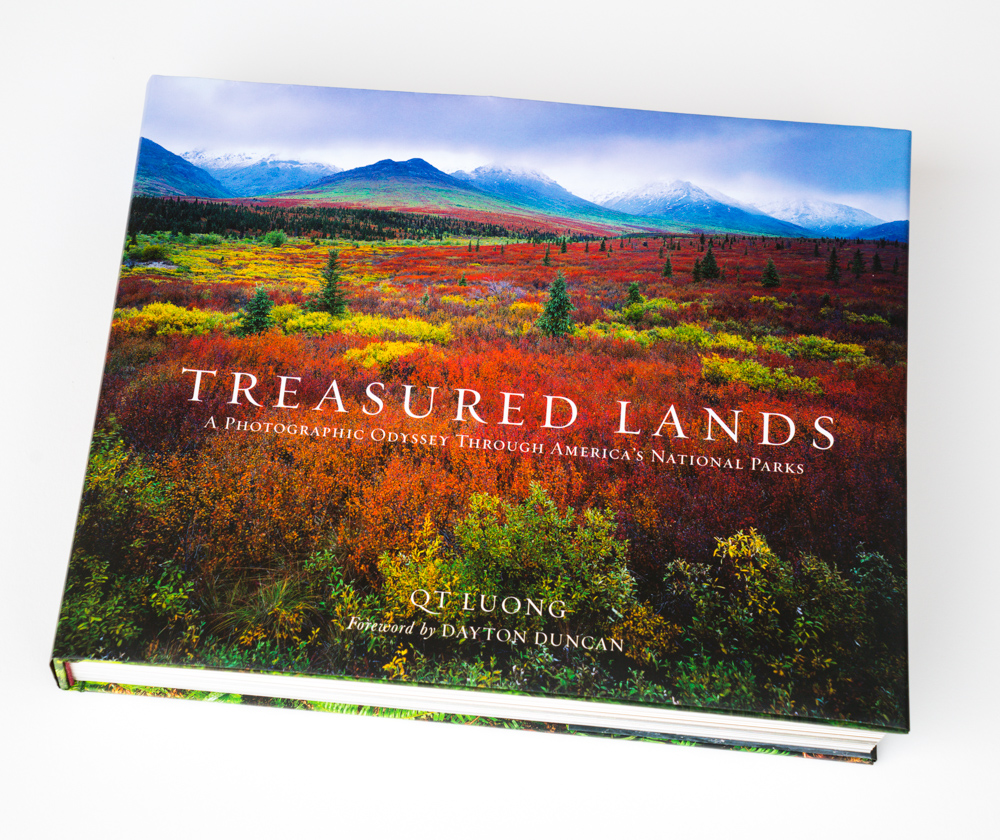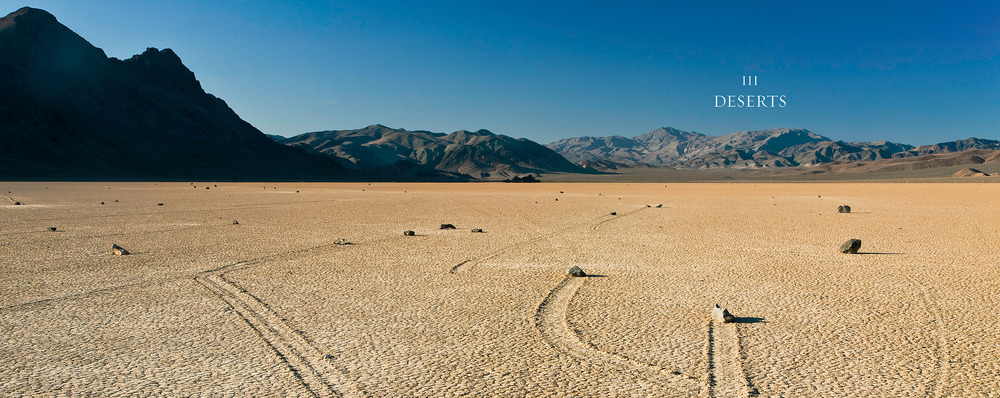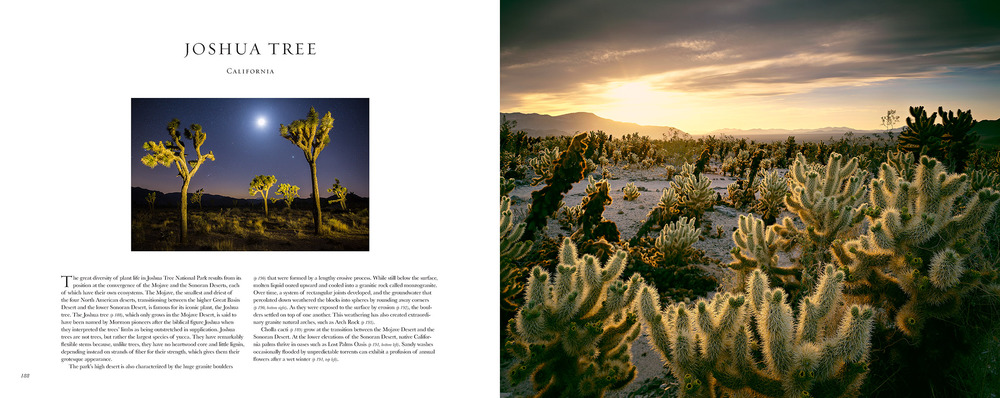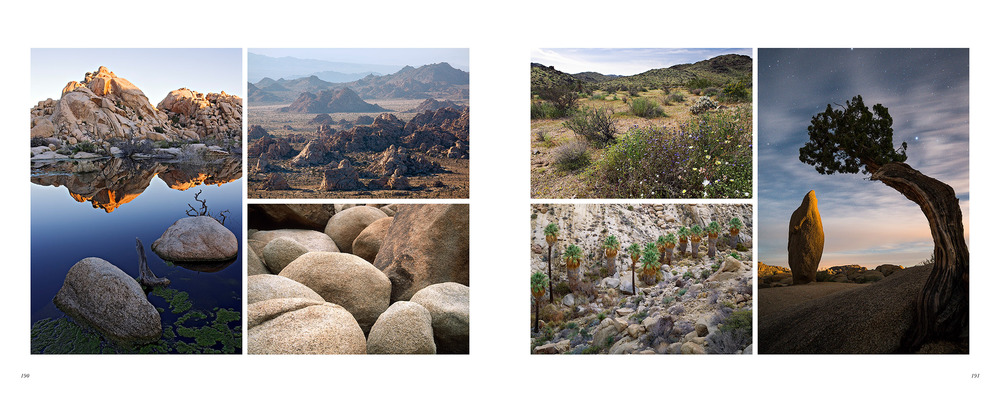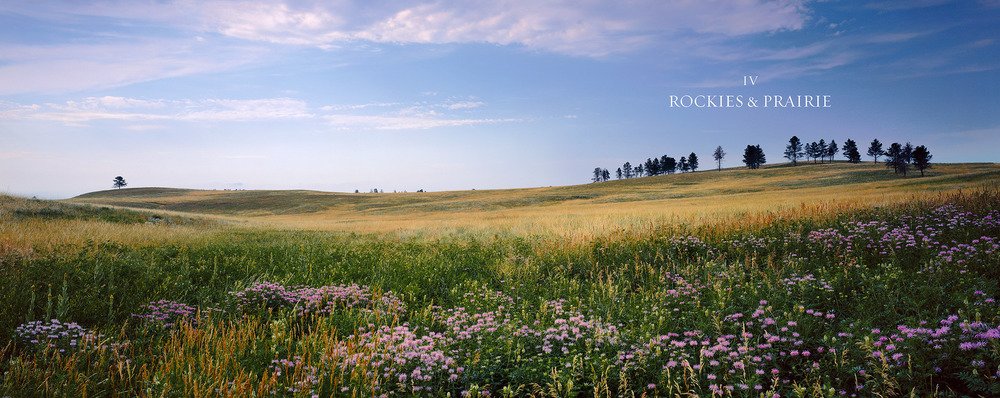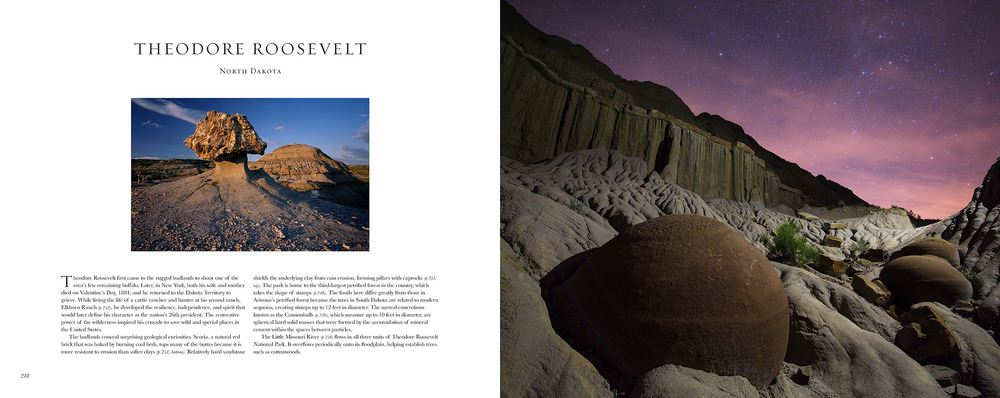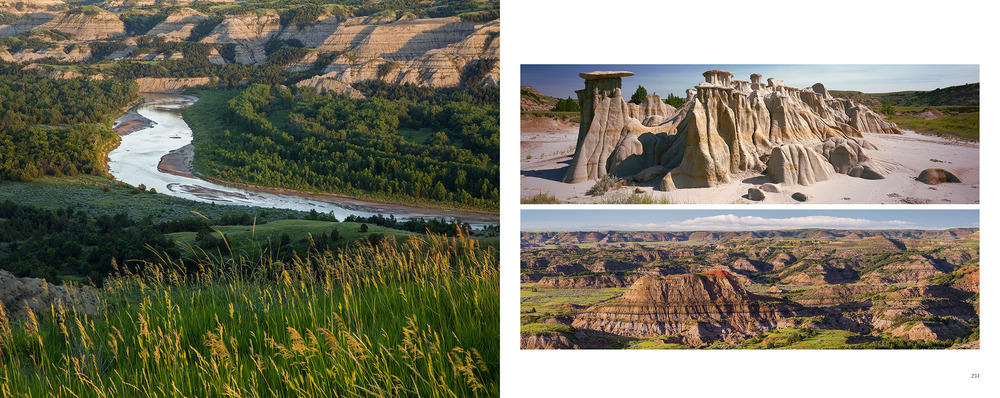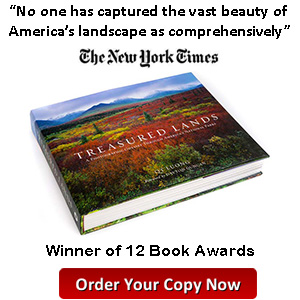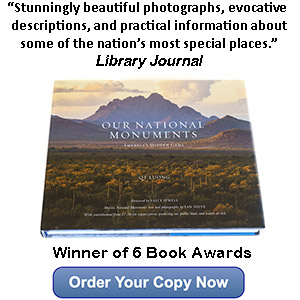Exploring the Channel Islands Sea Caves by Kayak
Last Monday, after picking up the kids at 2:30pm, I found that my preparation for the multiple presentations to be given in Santa Barbara on Wednesday was essentially completed. I decided to use the extra day for a quick trip to the Channel Islands, since the Channel Islands Harbor in Ventura is just half-an-hour from Santa Barbara. With little time left, I looked on the internet for fifteen minutes before booking a trip with an outfitter, Santa Barbara Adventure Company for the next day. The cost of $179 is very reasonable considering that it includes Island Packers ferry transportation, use of the kayaks and services of a guide. I received a gear list by email and packed everything in one hour (including 50 copies of Treasured Lands), then drove five hours from San Jose to Ventura. The next morning, I noticed near the Island Packers office another outfitter even offering walk-in kayak tours. Embarking on a national parks adventure doesn’t necessarily require much advance planning!
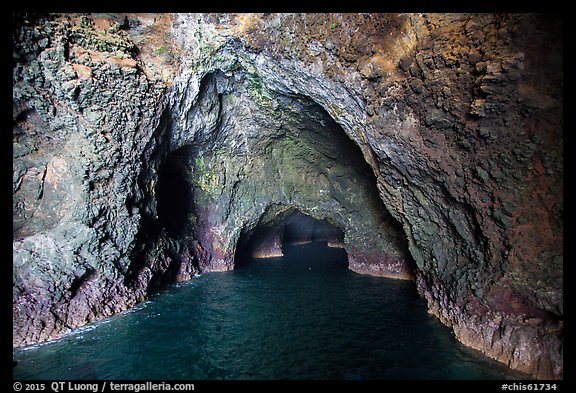
Of all the islands, Santa Cruz is the best choice for a day trip. Because Anacapa is so small, the trips there are set up in a way that doesn’t leave much time on the island. The three other islands are just too far for a day trip. I had explored hiking trails on Santa Cruz island on a previous trip. On two occasions, on the return from an outer island, the Island Packers boat visited Painted Cave, one of the largest sea caves in the world. It was impressive to see the large vessel entering the sea cave, but the experience left me yearning for a more intimate exploration. I had read that one of the most remarkable features of the cost of Santa Cruz Island is the concentration of beautiful sea caves.
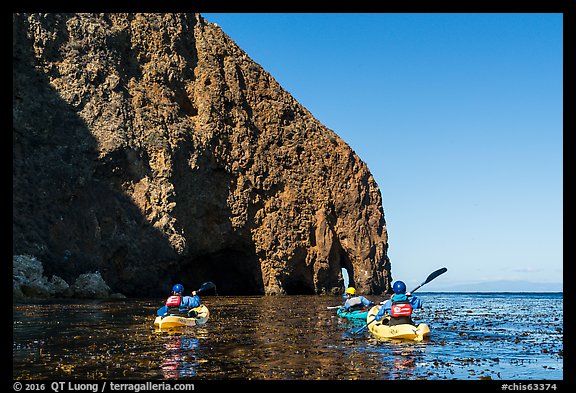
Having previously experienced calm waters on autumn scuba diving trips to the Channel Islands, I was surprised by the strong wind and swell on Tuesday. For the first time in several decades, I even got seasick towards the end of the crossing to Santa Cruz Island, which made for a rattling start to the day. The authorized outfitters have each a spot on the beach of Scorpion Anchorage where they store kayaks and gear, making the logistics simple. Santa Barbara Adventure Company provided everything which was needed, even some of the items on the packing list, such as water shoes, eyeglass straps, gloves, and sunscreen, so in fact you didn’t need to bring anything particular rather than a bathing suit to wear under their wetsuits, a water bottle, and a snack.
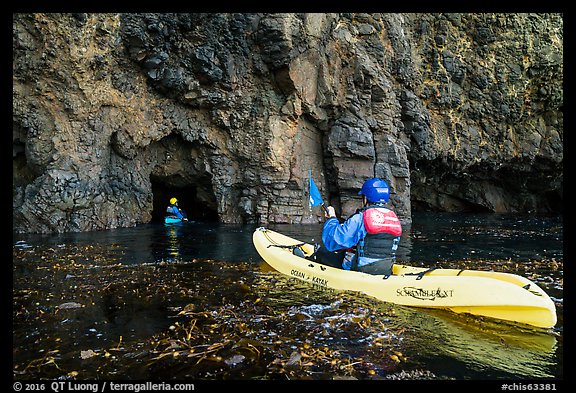
It was a beautiful day, quite balmy for November, but paddling upwind was tough, especially with the sit-on-top kayak not feeling very stable in the swell compared to the sit-inside kayaks I am used to. The possibility of flipping over at times didn’t seem so remote. We spent about four hours on the water, and paddled maybe a total of 2.5 miles, both to west and to the east of Scorpion Anchorage, where we launched the kayaks.
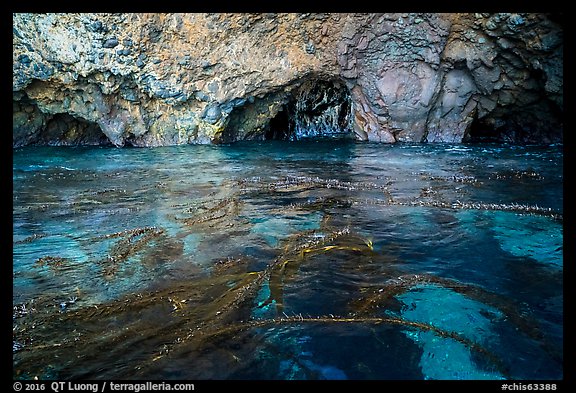
Within this distance, we visited four different sea caves. Most of them form a tunnel, which means that you enter via one end, and exit via a different end, which makes for a fun exploration. Sometimes, the tunnel was barely wide enough for a kayak.
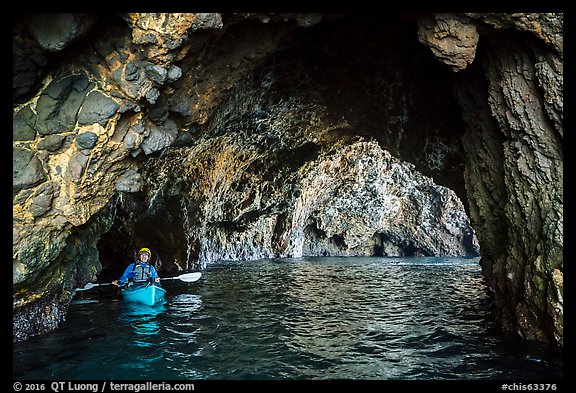
Besides making paddling quite strenuous, the swell also preventing us from exploring a few sea caves, where the water was too turbulent. One of the caves we visited has normally exquisitely blue water, but that day, the color was hidden by whitewater! The swell made the photography challenging on two counts. First, I often had to keep the camera in the dry bag that I kept between my legs to prevent damage from water splashes. In retrospect, given the rough water conditions, I should have used a waterproof enclosure rather than a dry bag. Second, the kayak was often rocking, which required me to use a faster shutter speed, which combined with the dim light in the caves often resulted in a high ISO. And while snapping the pictures, I had to be careful not to hit rocks too hard!
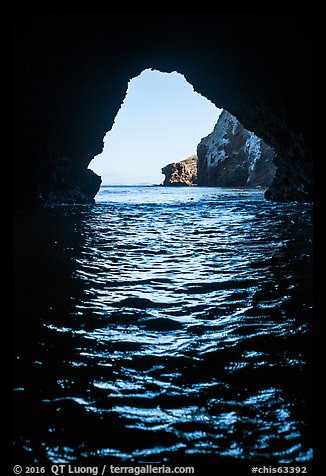
An advantage of the mid-week, November trip is that the group was small. It was just two Canadians, our excellent guide Kyle, and me. Towards the end, I got quite tired and was glad to be standing on firm terrain again. However, it was a great experience that opened my eye to new possibilities. I had stood on top of the same cliffs, but did not suspect the beauty which could be seen by entering them from water level, a short distance below. I am already planning to come back earlier in the season, in August or September, when conditions are often more calm, traveling with friends or family for more flexibility.
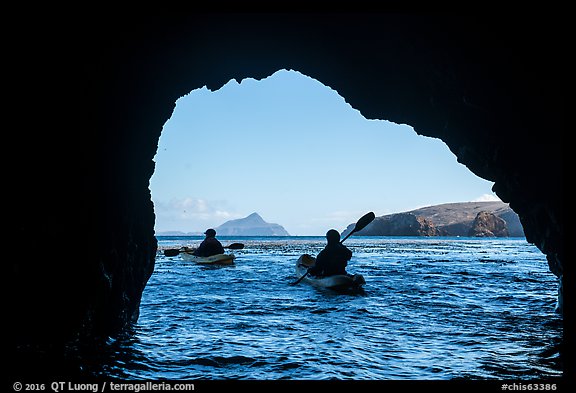
On Wednesday, I delivered three different presentations about “Treasured Lands”. The first one took place at the Carpinteria High School, which serves a semi-rural community with a large Hispanic population.

Since I had been warned that the kids there can be quite rowdy, I was pleased to be able to hold their attention and try to inspire them to visit a national park. They are the future generation for which the parks are preserved, and the constituency that our parks will need as advocates in the future.

(photo by Cathy Oliverson)
Since I did not go to art school, nor did I receive any formal training as a photographer, I was honored to present and answer questions at the UCSB College of Creative Studies in the afternoon.

It was cool (and humbling) to see the announcement for my evening presentation next to Joan Baez in the UCSB Arts and Lectures season catalog. It was part of a lecture series celebrating the National Park Service Centennial and the other speakers were Ken Burns, Dayton Duncan, Douglas Brinkley, and Terry Tempest Williams.

Maybe due to the competition from the World Series Final, Campbell Hall was only half-filled despite press announcements but since the auditorium, largest on the UCSB campus, seats 800+, that was still a great turnout for me. I found it rewarding that the 40+ people who came on stage to have their copy of Treasured Lands signed afterwards said they enjoyed the presentation greatly.
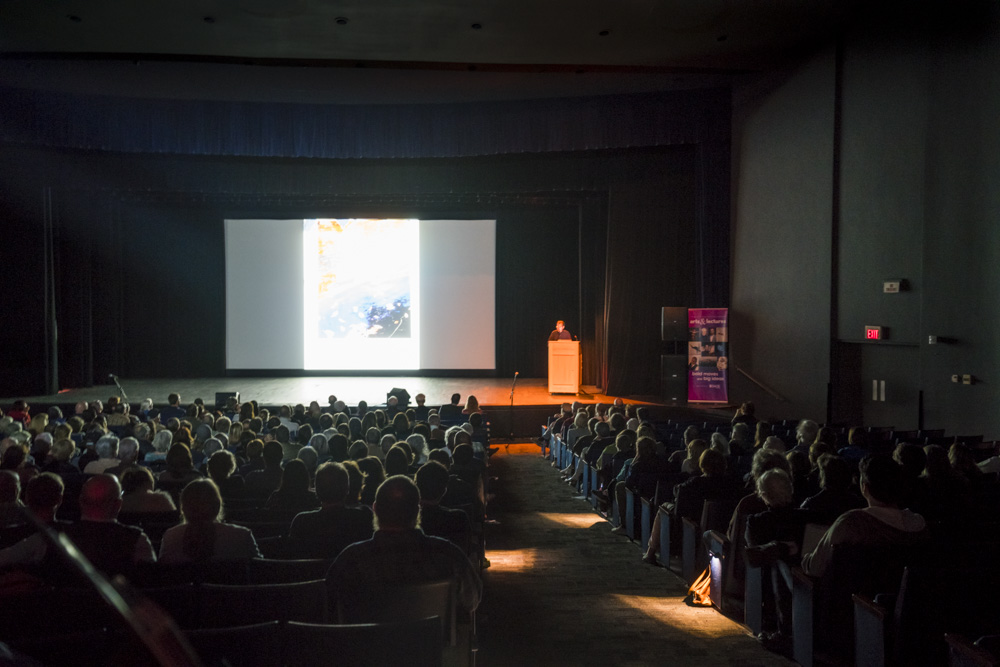
(photo by Roman Baratiak)
I will be making arrangements for more events in 2017. If you have suggestions for venues, they would be most welcome!

